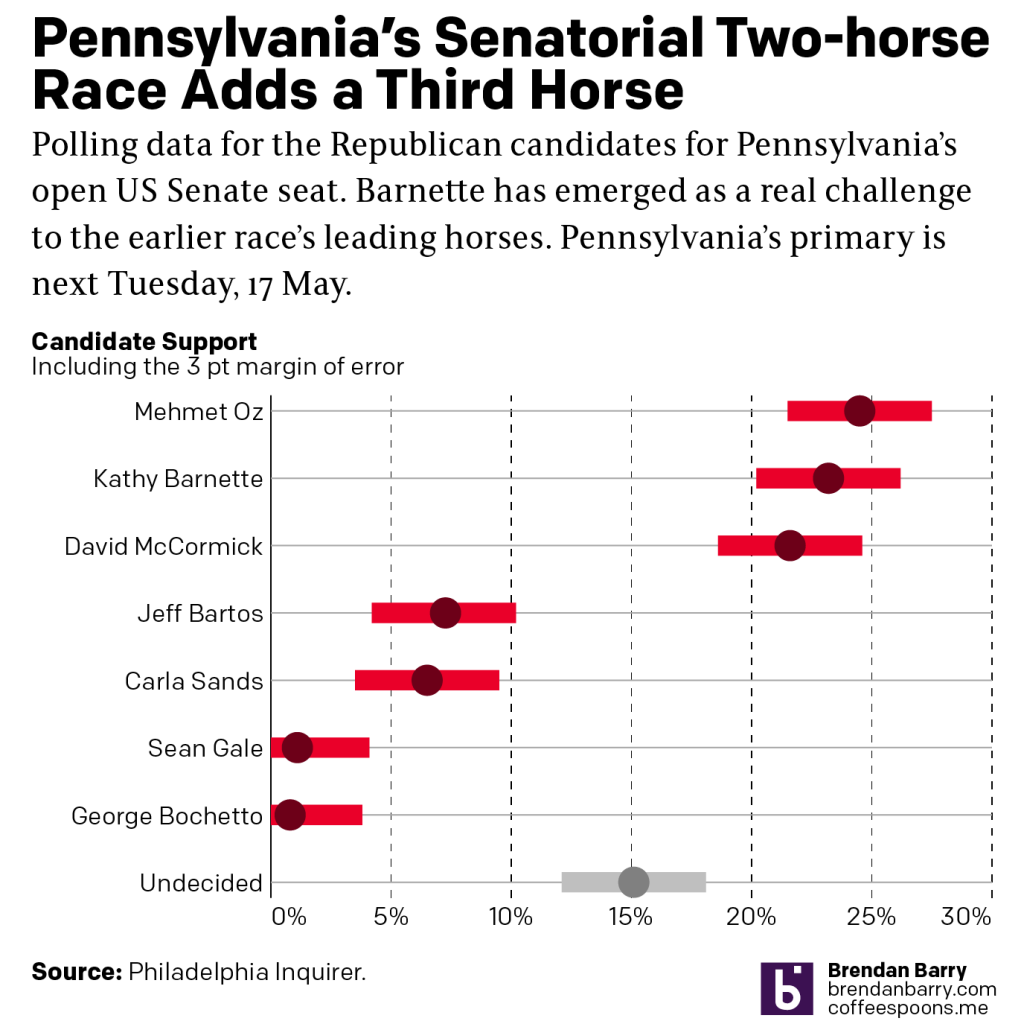Earlier this week I read an article in the Philadelphia Inquirer about the political prospects of some of the candidates for the open US Senate seat for Pennsylvania, for which I and many others will be voting come November. But before I get to vote on a candidate, members of the political parties first get to choose whom they want on the ballot. (In Pennsylvania, independent voters like myself are ineligible to vote in party primaries.)
This year the Republican Party has several candidates running and one of them you may have heard of: Dr. Oz. Yeah, the one from television. And while he is indeed the front runner, he is not in front by much as the article explains. Indeed, the race largely had been a two-person contest between Oz and David McCormick until recently when Kathy Barnette pulled just about even with the two.
In fact, according to a recent poll the three candidates are all statistically tied in that they all fall within the margin of error for victory. And that brings us to the graphic from the article.

Conceptually this is a pretty simple bar chart with the bar representing the share of the support of those polled. But I wanted to point out how the designer chose to represent the margin of error via hatched shading to both sides of the ends of the red bar.
In some cases the hatch job does not work for me, particularly with those smaller candidates where the bar goes negative. I would have grave reservations about the vote should any candidate win a negative share of the vote. 0% perhaps, but negative? No. I also don’t think the grey hatching works as well over the grey bar in particular and to a lesser degree the red.
I have often thought that these sorts of charts should use some kind of box plot approach. So this morning I took the chart above and reworked it.

Overall, however, I really like this designer’s approach. We should not fear subtlety and nuance, and margins of error are just that. After all, we need not go back too far in time to remember a certain candidate who thought she had a presidential election locked up when really her opponent was within the margin of error.
Credit for the piece goes to John Duchneskie.
